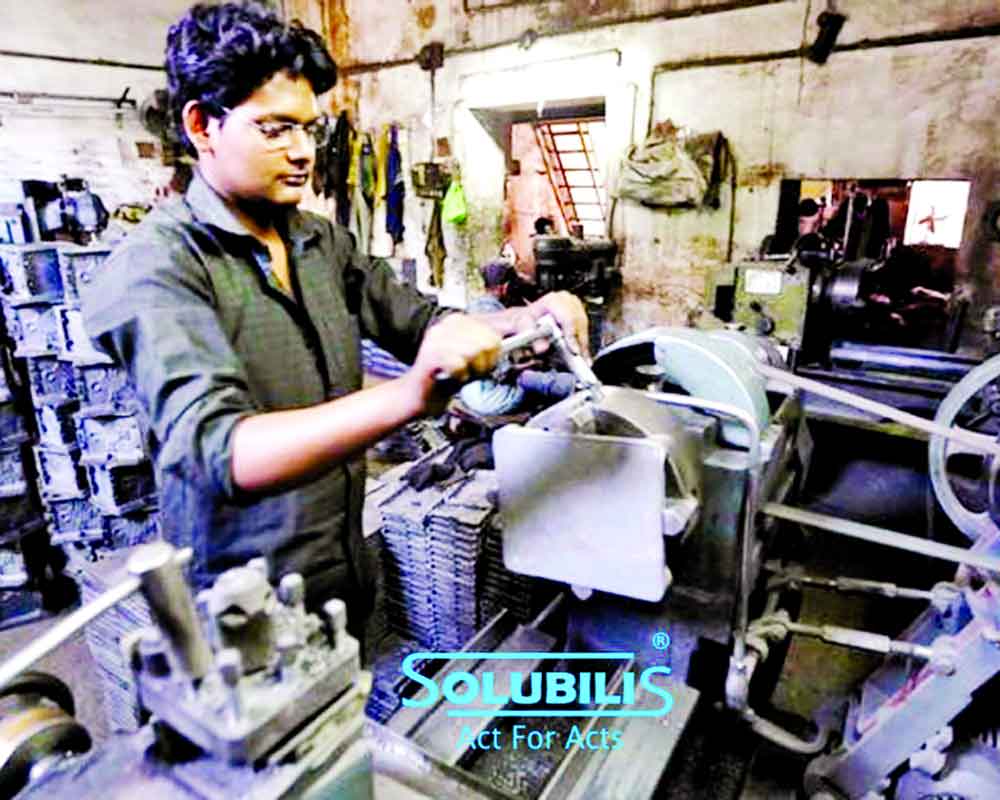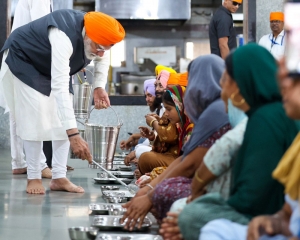To truly establish rupee as a global currency, there is a need to focus on low-tech manufacturing, the growth of small and medium-sized enterprises
India’s steady efforts to shift to pay off energy imports in exchange for the Rupee can be understood as a determined move towards the internationalisation of the national currency. It is not to replace the all-pervasive dollar. It is to enter into a competition, hitherto unexplored, through dynamic diplomacy.
Last July India signed an agreement with the UAE for rupee settlement in exchange for crude imports. Soon after Indian Oil Corporation (IOC) made payments for the purchase of a million barrels of crude oil from Abu Dhabi National Oil Company (ADNOC) in Rupee. By doing that it was ‘Bharat’ that was active, and not ‘India’, because the change towards making Indian currency in a proactive position in the international currency market, is essentially an indigenous policy shift, ever since instituting the concept of ease of doing business by the Narendra Modi government in 2014. This can be best explained as Bharatiyata in pursuit of the Kautilyan lines of statecraft, which the colonial rulers and the Mughal rule over India had ignored.
Earlier, India tried this with Russia. But the effort did not succeed. It is because the Indian Rupee is said not yet “fully convertible”. The major reason, as reported in a study of Indian exports from 2015 to 2021, is the harsh reality that India’s share of global exports of goods has been only 1.77 per cent. Incapability in exports is a factor that diminishes the need for other countries to hold Indian currency in reserves. Russia has already been holding Rupees worth over US$ 40 billion.
Growth of low-tech SMEs in India compared with China’s
Save the deal with the UAE, the idea of a Rupee for oil has not materialised enough. The West Asian states currently hold a lesser amount of Rupee as their foreign exchange, than Russia. A major reason is, that India is not producing enough manufactured goods in machines and tools and household equipment, which can be export worthy for generating faster revenue and creating international demand for the Rupee.
India needs to stress manufacturing low-tech machines and tools, even as the thrust for hi-tech manufacturing must keep going. This is not only to compete with China but also to create effective deterrence to Chinese border dreams. According to a study, the manufacturing sector in China contributed over 42.6 per cent to the country’s GDP in 2014. Over 140 million SMEs function in China, producing 68 per cent of goods of China’s total exports to markets the world over. The SMEs in China create 79 per cent of total national jobs and contribute 60 per cent to the country’s GDP till 2020. To promote the government reduced the interest rates for SMEs and large firms by 4.84 per cent and 5.06 per cent, respectively, at 0.02 and 0.05 percentage points compared to 2019. These also create Chinese economic power enough to influence the world order
A study by the International Monetary Fund (IMF) reports that China’s trade surplus rose to US$ 218 in 2006, putting up an eight per cent growth in the GDP. In H1 of 2023, China experienced lower demand from external markets than in H2 of the previous year, yet performed the best among the major Asian countries. That became possible due to continued demand for its share of advanced manufacturing products, namely, new energy vehicles (NEVs), solar panels, and lithium batteries. These studies, however, did not take into cognisance how much revenue China generates, or what is the percentage of Chinese products distributed to meet its domestic needs, or which are its revenue generated from exports of low-tech household products.
Indian exports need to upgrade on standardisation and quick processing practices. For example, equipment and assembly parts of many goods have to be procured from different geographies for which quick processes like clearances, expenses of handling processes in various airports, etc., all come into play. All these create challenges for India to join the race for technology manufacturing in the world. However, India’s challenges are mostly in high-tech enterprises. Such anomalies or obstacles should not pose in low-tech productions, which are doable domestically.
After all, Make-in-India needs to be followed by the clarion call for selling also outside India, especially the low-skilled and daily-use products which would bring faster revenue and improve the international market share of Indian exports. India also needs to develop niche technological sophistication for exports, while innovating in the production structure. That alone can bolster Rupee’s chance to be more convertible in the world market.
As the manufacturing enterprises are carried out mostly in hi-tech domains, by established industrialists, the focus on the low-tech SMEs has been less prioritised so far. It started from a lesser dominant position in 2019 at a share of 30.5 per cent to a more dominant position of the total Indian manufacturing of 43.6 per cent in FY 2022-23. The output growth is by 10.4 per cent, which is commendable.
However, most of these investments have been in the agriculture and high-technology sectors of high-investment enterprises. The contribution of the manufacturing sector to the GDP was Rs 7154.65 billion in the Q3 of 2023 or 14 per cent. Comparatively, the contribution of Indian SMEs to the national GDP is 27 per cent. According to data published on 1 November 2023, India has established 20.09 million SMEs till June 2023.
Looking Back
India had started promoting MSMEs rather late after Independence. There may have been many reasons, one major being the five expensive wars India had to be engaged with since 1948, with the third and fourth planning years tormented by Chinese aggression (1962) and the Pakistan war (1965), respectively; yet from the Fifth planning the push could have been given to the MSMEs.
After over 60 years, in 2007, the government started pushing for more small manufacturing enterprises. The erstwhile ministries for small-scale and agro-rural industries were clubbed to create a ministry of micro, small and medium enterprises (MSMEs) in 2007. That is, over 16 long years of economic liberalisation in 1991. With occasional changes in statuses between 2007 to 2014, such as 134 in 2007 and 142 in 2014, India posted a status at 79 in 2014, and 63 in 2019. The irony is, albeit improving India’s ease of doing business status to 63 in 2019 from 134 in 2007, India continues to struggle with the issues of lack of timely financial support, technological upgradation, cheap non-polluting power supplies, dependence on imports, and tough competition from global players.
The SMEs currently contribute only 7 per cent to the GDP of India, employing about 28 million workers. The production lines are mostly in food products, beverage, tobacco and tobacco products, cotton textiles, wool, silk, synthetic products, jute, hemp & jute products, wood & wood products, furniture and fixtures, paper & paper products, printing publishing and allied industries, machinery, machines, apparatus, appliances and electrical machinery.
Counterbalance Chinese Goods
A comparison of China with a democratic India may sound imperfect, given the political processes enshrined in rules and regulations for decision-making systems in the two states. Yet considering India’s priority to develop manufacturing capabilities to reduce imports from China or a hostile country, that would contain the muscle flexing episodes in Indian borders, India has no option other than intensifying export worthiness of the MSME goods, simply because these goods shall generate faster revenue.
India needs to manufacture every good that China produces, first by emulating, then innovating on these, and thereafter, by excelling in quality. So that Indian goods can pose strong competition to Chinese goods in all world markets. That is the only process to counterbalance China. For this to happen, India needs to create incubation hubs for youths to engage in SMEs. They need to be harnessed from the unemployed and/or unorganised pool of talents from every nook of Indian society. The SME incubation hub may turn out to be the best labour bank in manufacturing. Who can best mentor these hubs other than the established Indian industrialists, who have the acumen in competing in the world markets?
It is high time since 2019, that India has started the battery of underprivileged youths into the incubation entrepreneurship. By scouting them from the grassroots such as from the unorganised marketplaces, villages, shops, and institutes, including the ITIs, eliciting their skills at innovation, and growing them in the manufacturing incubation centres under the mentorship of the established industrialists, India will only create a new Bharat brighter and more brilliant. After all, manufacturing is the genesis of economic advancement.
(The writer is an academic counsellor, at Indira Gandhi National Open University and specialises in energy politics, views are personal)


























